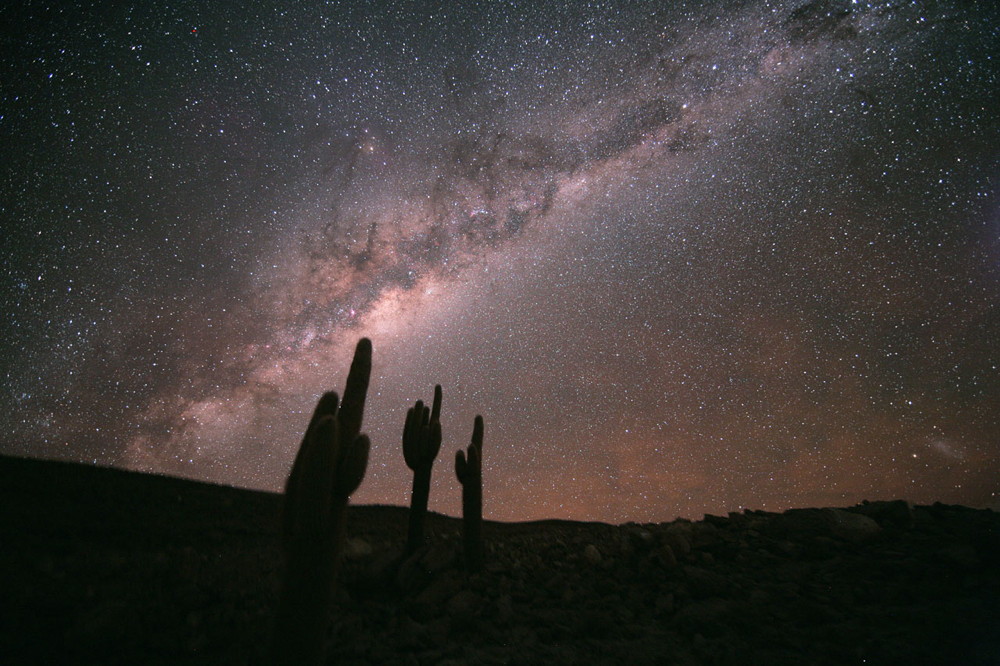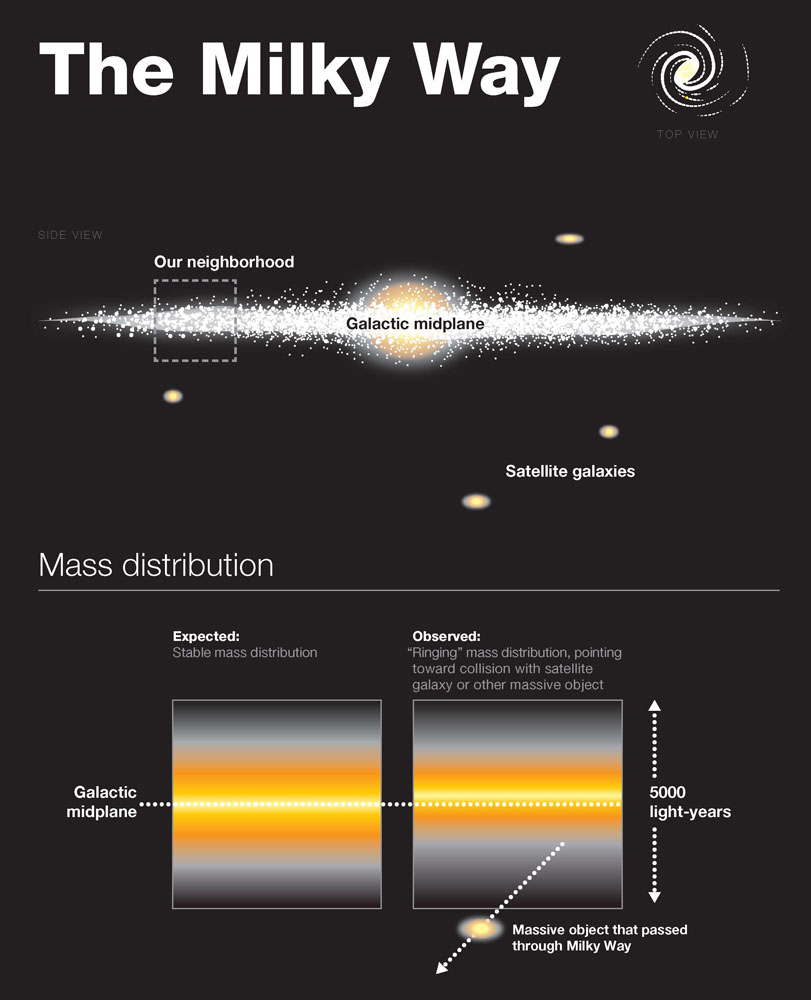Mystery Wave in Milky Way Galaxy Suggests Recent Crash

"We have found evidence that our Milky Way had an encounter with a small galaxy or massive dark matter structure perhaps as recently as 100 million years ago," said Larry Widrow, a professor at Queen’s University in Canada. "We clearly observe unexpected differences in the Milky Way’s stellar distribution above and below the Galaxy's midplane that have the appearance of a vertical wave — something that nobody has seen before."

About 60 miniature "dwarf galaxies" have been discovered orbiting the Milky Way. Theory suggests that many invisible dark matter satellites also circle our galaxy, though these would only be detectable by their gravitational pull.
It's likely that one of these may have slammed into the Milky Way, though even that is not certain.
"The perturbation need not have been a single isolated event in the past, and it may even be ongoing," said Susan Gardner of the University of Kentucky. "Additional observations may well clarify its origin."
The research is detailed in a recent edition of the Astrophysical Journal Letters.
This story was provided by SPACE.com, a sister site to LiveScience. Follow SPACE.com on Twitter @Spacedotcom. We're also on Facebook & Google+.
Sign up for the Live Science daily newsletter now
Get the world’s most fascinating discoveries delivered straight to your inbox.











